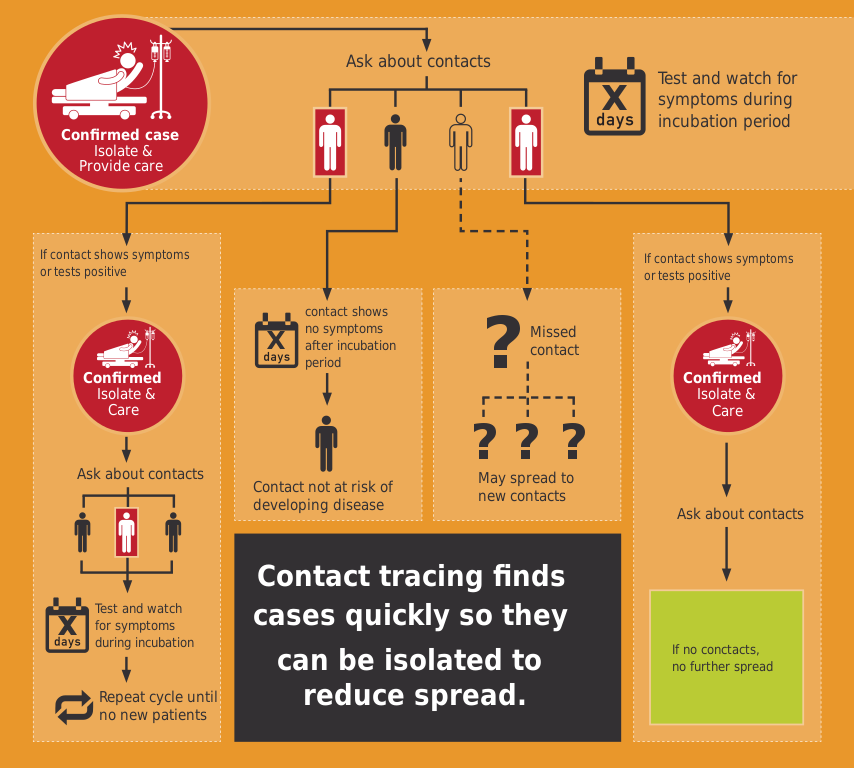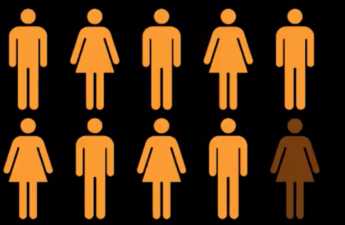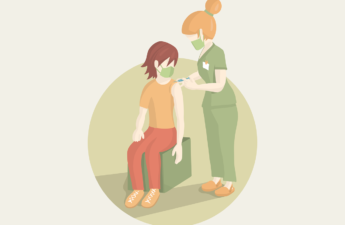Christine Vestal and Michael Ollove, Kaiser Health News

In mid-March, Jenine Clements’ boss asked her to set aside at least 24 hours out of her work week to call people who’ve tested positive for COVID-19.
The goal was to locate people who had been in close contact with an infected patient and make sure they quarantined for two weeks to stop the spread.
Clements, 41, is a disease investigation specialist for the Washtenaw County Health Department in Michigan and, for more than 17 years, she’s made similar calls to people who test positive for other diseases, including HIV, syphilis and hepatitis C.
Making the extra calls to COVID-19 patients meant Clements had to work evenings and weekends. But she said she’s happy to do it. If people don’t answer at first, she calls back up to three times. She said it helps that the state issued a public notice last week asking everyone to answer calls from the health department.
“The fear level is pretty high right now,” Clements said. “With so many people in quarantine away from their families, lots of people just want to talk with someone.”
Nationwide, contact tracing — which Clements and more than 2,000 other public health workers across the country perform on a regular basis — is the key to reopening businesses and resuming some form of normal life as the coronavirus pandemic begins to subside, epidemiologists say.
But with no national plan and scant federal dollars on the horizon, states are funding their own initiatives for what experts predict will be a massive undertaking lasting 18 months to two years, until a vaccine is developed.
The result will be a national patchwork of contact tracing teams, with some more effective than others.
A major challenge will be coordinating information flow from disparate databases on who has tested positive, who has been called and who has been quarantined among separate local, state and contract workforces, said Josh Sharfstein, a vice dean at Johns Hopkins Bloomberg School of Public Health in Baltimore. “We don’t want some people getting no calls and others getting 10 calls,” he said.
A few large states, including California, Massachusetts and New York, have announced major projects involving millions of state and philanthropic dollars, thousands of new workers and partnerships with a wide range of organizations.
But so far, most states have deployed their existing public health employees, along with volunteers, out-of-work school nurses, reassigned state employees and the National Guard, to contact residents who have tested positive for COVID-19 and the people they’ve been in contact with.
Some states, including Colorado, Kansas, North Dakota and Rhode Island, are relying heavily on cellphone data, online apps and other technology to enhance their contact tracing efforts.
“There are a lot of different models out there,” said Marcus Plescia, chief medical officer at the Association of State and Territorial Health Officials.
“Some states may be saying, ‘We’re not Massachusetts; we can’t afford to launch that kind of effort,’” he said. “But there’s something every state can do that fits their unique circumstances and their budgets. They’ve got to do something if they want to get out of this ‘stay at home’ by the summer.”
A new report by researchers at Johns Hopkins Bloomberg School of Public Health and the Association of State and Territorial Health Officials estimates that at least 100,000 additional trained workers and more than $3.6 billion will be needed to safely manage the spread of the virus once businesses start reopening.
Tom Frieden, the former Centers for Disease Control and Prevention director and New York City health commissioner, estimates the number of needed contact tracers is closer to 300,000 — roughly one contact tracer for every thousand people.
David Harvey, executive director of the National Coalition of STD Directors, which represents workers like Clements, called on the federal government to leverage the nation’s existing disease intervention specialists, who have helped with nearly every public health outbreak for more than half a century, including HIV and STDs, Ebola and Zika.
“We need a federal plan that provides money and training to states and employs the expertise we already have,” he said. “We can’t just hire an army of young people and plop them into the public health system.”
This week, a bipartisan group of health experts, including former Food and Drug Administration chief Scott Gottlieb and a former acting administrator of the Centers for Medicare and Medicaid Services, Andy Slavitt, sent a letter to Congress asking for $46 billion to improve the nation’s contact tracing capacity, including timely testing of everyone who need it.
Monumental Undertaking
Contact tracers know they have to track everybody who lives in the patient’s household or shares the same workspace. In other cases, more sleuthing is necessary. It could include someone the infected person sat near on a bus or stood in front of in a long grocery store line.
In developing contact tracing programs, public health authorities devise criteria for determining who needs to be tracked down, starting with standards for physical proximity to an infected person and the duration of the contact — for example, within 6 feet of an infected person for 10 minutes or longer.
Depending on the extent of social distancing that’s being practiced in any given state or locality, the number of people who may be infected by a single coronavirus patient can range from two or three to more than a dozen. So for every 1,000 residents who test positive for COVID-19, there may be 10,000 or more potentially infected contacts. The numbers quickly add up.
To be effective, contact tracers must get in touch as quickly as possible with people who test positive for COVID-19. Often, they are the first to give the patient their test results.
Here’s how it works: When a person tests positive for COVID-19, the lab sends a report to the doctor and to the health department, just as it would any other communicable disease. The health department then generates a list that is divvied up among contact tracers, who immediately start making calls.
Once the infected people are reached, the names of those they’ve been in contact with are gleaned by talking to them, and in some cases, asking them to check their cellphone call records, calendars, credit card receipts and photos to jog their memory. Then those potentially infected people are called and asked to voluntarily self-quarantine for two weeks. When available, contact tracers offer people housing, food delivery and cash to make up for lost wages while quarantining.
Most public health agencies have extensive experience in disease surveillance. State and local health departments are frequently called upon to trace foodborne and other toxic outbreaks, and infectious diseases such as Ebola and the H1N1 strain of the flu.
One of the largest such efforts occurred around HIV/AIDS in the 1980s and ’90s. Although a highly stigmatized disease at the time, it had a more defined pattern of spread, through sexual relations or the sharing of drug needles. In that way, identifying contacts probably proved easier than the COVID-19 virus, where an infected person might not even know the person from whom he or she caught the virus.
And certainly, no contact tracing program ever approached the scale of the one needed now, according to Jonathan Zenilman, an epidemiology professor at Johns Hopkins University.
The virus comes after a period in which investment in public health has declined precipitously. Federal funding for public health has fallen by 10% over the past decade, according to the nonprofit Trust for America’s Health, leaving the nation with a grave deficit in the numbers of public health workers.
State Strategies
Earlier this month, Massachusetts Republican Gov. Charlie Baker was among the first to announce a large-scale contact tracing project. Budgeting $44 million and working with public health organization Partners in Health, Baker pledged to initially hire and train 1,000 new workers. The state’s local health departments already had been carrying out contact tracing, assisted by 1,700 volunteers from the state’s universities.
Last week, New York Gov. Andrew Cuomo, a Democrat, announced that his state, along with Connecticut and New Jersey, will join in a partnership with Michael Bloomberg’s Bloomberg Philanthropies to create a regional contact-tracing program. The states have been coordinating some of their COVID-19 policies.
As part of the project, Johns Hopkins University would build an online curriculum and training program for contact tracers. Bloomberg Philanthropies, which has pledged $10.5 million for the effort, would work with the New York State Department of Health to identify and recruit contact tracers.
The state says it expects to draw tracers from public health departments, other state agencies and a pool of 35,000 students in medical fields in the state’s public universities. Connecticut and New Jersey have not released details of the plans in their states.
Earlier this week, New York City Democratic Mayor Bill de Blasio said the city wants to hire 1,000 contact tracers immediately.
California Democratic Gov. Gavin Newsom announced last week that the state would develop an academy to train 10,000 public health workers to become contact tracers.
Washington state plans to recruit and train 1,900 contact tracers by mid-May to map and control the spread of the virus as the state begins to reopen the economy.
At a press briefing, state health officer Dr. Kathy Lofy warned that the state needed to do at least two to three times the testing it’s doing now for contact tracing to be effective. She said 600 people in state government had been trained in contact tracing and another 800 volunteers were in training. Democratic Gov. Jay Inslee also asked the National Guard to deploy 500 troops as contact tracers.
Maryland Republican Gov. Larry Hogan authorized a contract with the University of Chicago-based National Opinion Research Center to quadruple the state’s current number of contact tracers to 1,000.
Michigan’s Department of Health and Human Services announced last week that more than 2,200 volunteers had completed training and were ready to begin assisting roughly 130 state health department workers and hundreds of county contact tracers like Clements.
According to the state agency, contact tracers already have reached roughly 12,000 residents who tested positive for COVID-19. The state is expected to announce later this week the name of a firm it will be working with to oversee the operation.
On a smaller scale, the Utah health department this month deployed 200 health department staffers to work with local public health departments on contact tracing, and another 500 state employees from other agencies also will be made available, according to Tom Hudachko, spokesman for the department.
In Alaska, 80 registered nurses stationed across the state and a handful of itinerant nurses who travel to remote villages have been working full time on COVID-19 contact tracing ever since the first case was diagnosed in Anchorage in early March.
Before the virus hit, they conducted contact tracing for STDs and tuberculosis and worked with communities to combat homelessness, addiction, domestic violence, hunger and other public health problems.
Alaska, which lost entire villages to the 1918 Spanish flu pandemic, is hiring 20 to 30 more nurses, according to Sarah Hargrave, public health nurse manager for Alaska’s southeast region.
“We will continue to expand as much as needed,” she said. “We really want to stay on top of this COVID spread.”


